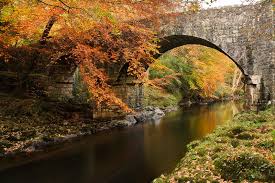One of the most important things for a vital community is a live arts network where musicians, writers, poets, playwrights and their audiences can meet, share some food and drink and enjoy a night of creative exchange. Hidden River Arts is located in Philadelphia, where we are fortunate to have such vitality. We are blessed with arts organizations of all sizes, and with venues that range from those of the most expensive theatres to small pubs and community spaces where art can be made and shared. Our intern, Nancy Allen, writes of her experience at one such event. Nancy is a student in the Creative Writing program at Temple University here in Philadelphia, and is just beginning to explore such opportunities. I’m grateful that she was willing to share this information with us. I hope that, as you read through, you will be thinking about the possibilities and opportunities that might exist in your own part of the world. We here at Hidden River would love to hear about them. One of our goals in 2019 is to begin building networks for artists – live arts venues, venues for book and poetry readings, spaces for gallery shows and other mixed-art activities. If we all share our knowledge of our own communities, towns and cities, we will be able to build such a network from our combined information. Then, with that network in place, we can begin to create “tours” of indy artists who can work cooperatively to support each other’s work, to invite each other to different parts of the U.S. and to other countries, other parts of the world…making it possible to create some really wonderful fellowship among artists and audiences. Boy, do we ever need it!
Debra Leigh Scott
Founding Director

Nancy Allen is an intern here at Hidden River Arts as well as a Creative Writing major at Temple University
On September 26, Moonstone Arts held a poetry reading at Fergie’s Pub hosted by Alina Macneal and Jennifer Hook, where Catherine Bancroft and Lisa Grunberger performed, and the reading was followed by an open mic. Moonstone Arts Center, for more than 35 years, has held events for poetry all across Philadelphia. It is a Philadelphia institution, the likes of which every city and town deserves. Moonstone Arts began in 1981, in a second floor space above Robin’s bookstore. Both the bookstore and the programs were run by Sandy and Larry Robin, and both quickly became Philadelphia institutions. The Moonstone fundraiser, “Sounds and Words,” will be held this year on November 10.

An institution for over 20 years in Philadelphia, Fergie’s Pub is a popular spot for live arts and social gathering
Fergie’s Pub, over twenty years old, has opened its doors to a variety of arts programs, live music, theatre readings, and literary activities for years, believing that a traditional “publick house” was meant to be a center for all sorts of creative and social activities.
Catherine Bancroft is an artist and writer who has performed her poetry at the Philadelphia Poetry Festival, Green Line Cafe, as well as other venues. Catherine has had her work shown at Muse Gallery, Off the Wall Gallery, The Sketch Club, The Main Line Arts Center, FireWorks Gallery, and many other places. She works mainly in collage, acrylic, mixed medias, and altered books. Her current Ellis Island Series was inspired by photographs of early 20th century immigrants. Catherine has also co-written two children’s books, Felix’s Hat and That’s Philomenia. She has also written book reviews for the Philadelphia Inquirer.
Lisa Grunberger is a professor in Temple University’s English department. She holds a Ph.D. in Comparative Religions from the University of Chicago. Grunberger is an award winning poet, whose work has appeared in The New York Times, and she is the author of Yiddish Yoga: Ruthie’s Adventures in Love, Loss and the Lotus Position (Harper Collins Press), and has recently staged her new play, Almost Pregnant, at The PlayGround at the Adrienne during the Fringe Arts Festival this past September.
As we mentioned, Moonstone Arts Center is having their 1st Annual Fundraiser on November 10th at 7pm. Eleven poets and two bands will be playing that evening. You can find more information and purchase tickets through their website, moonstonearts.org. If you are interested in discovering more about the poetry scene in Philadelphia, check out Phillypoetry.org, which serves as a great resource for events and places to go in the city for poets and poetry lovers.
It’s important for writers to stay connected and attend readings and live arts events throughout their city. This is great for the community and offers wonderful opportunities for the artists. We would welcome hearing from you in our comment section about the sorts of live arts events that help to create community and support local artists in your town or city! It would be a wonderful thing to begin building a national network of community arts venues and organizations to help artists move beyond their own local territory, grow their audience and develop relationships with colleagues across the country.






